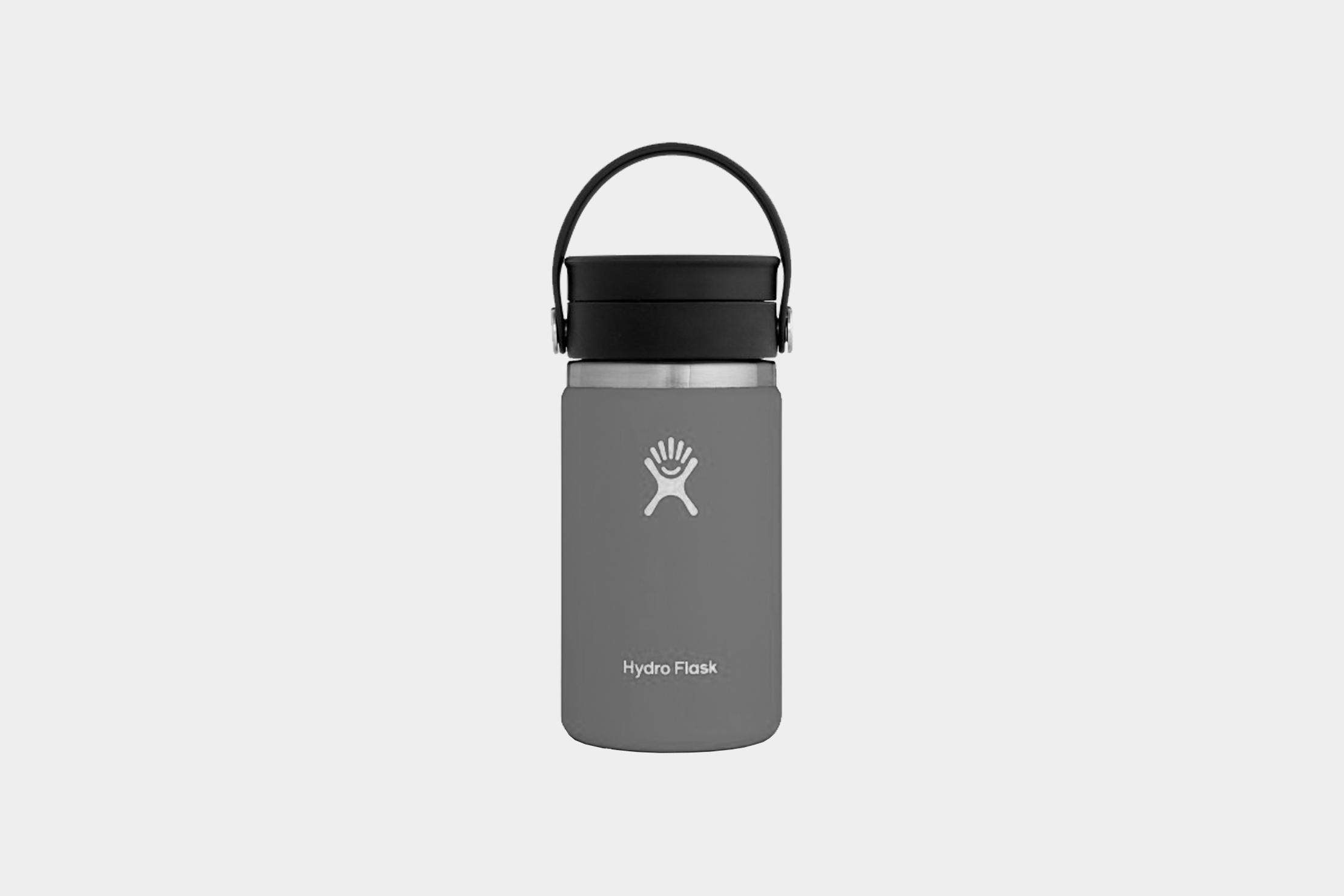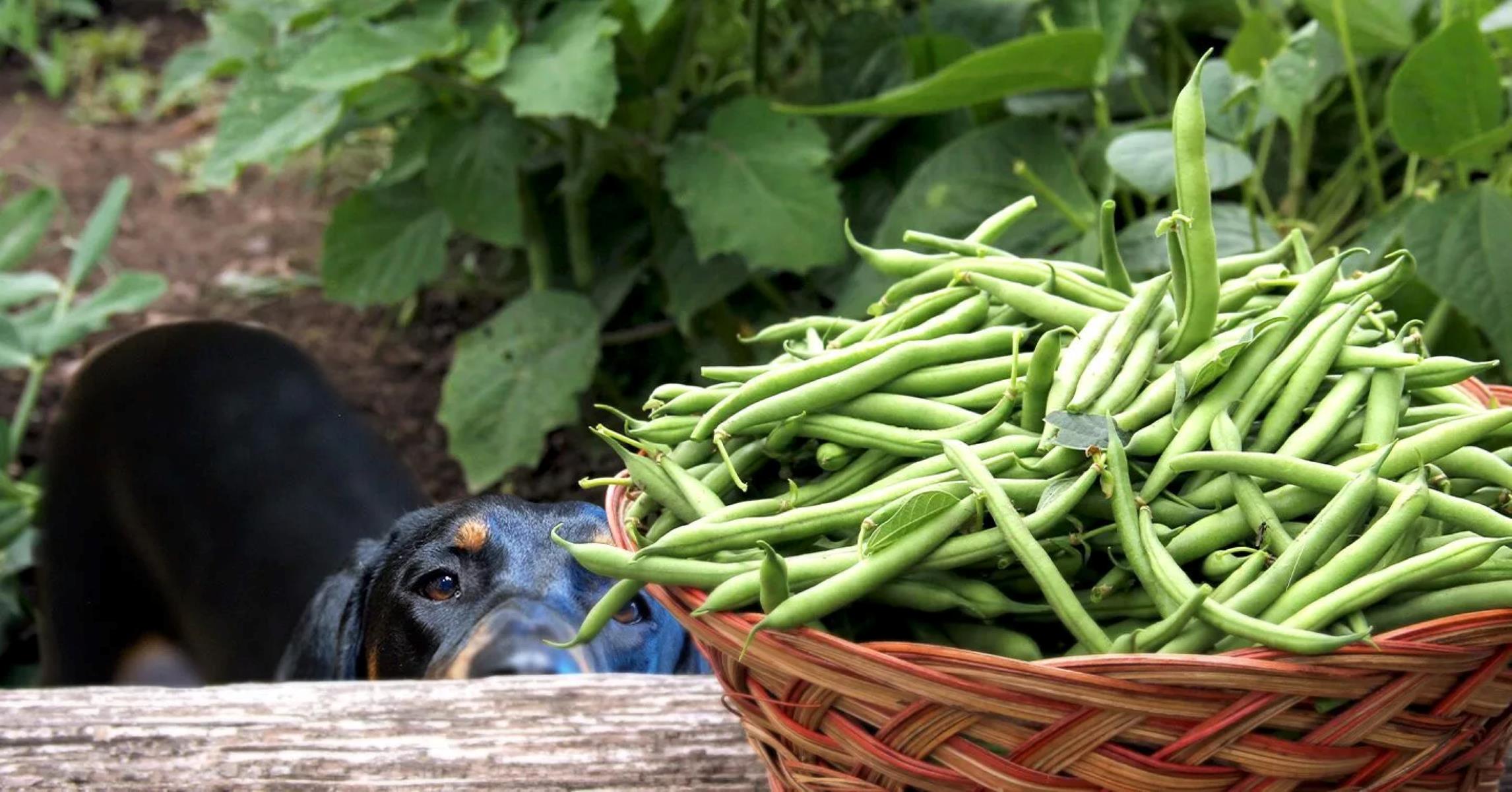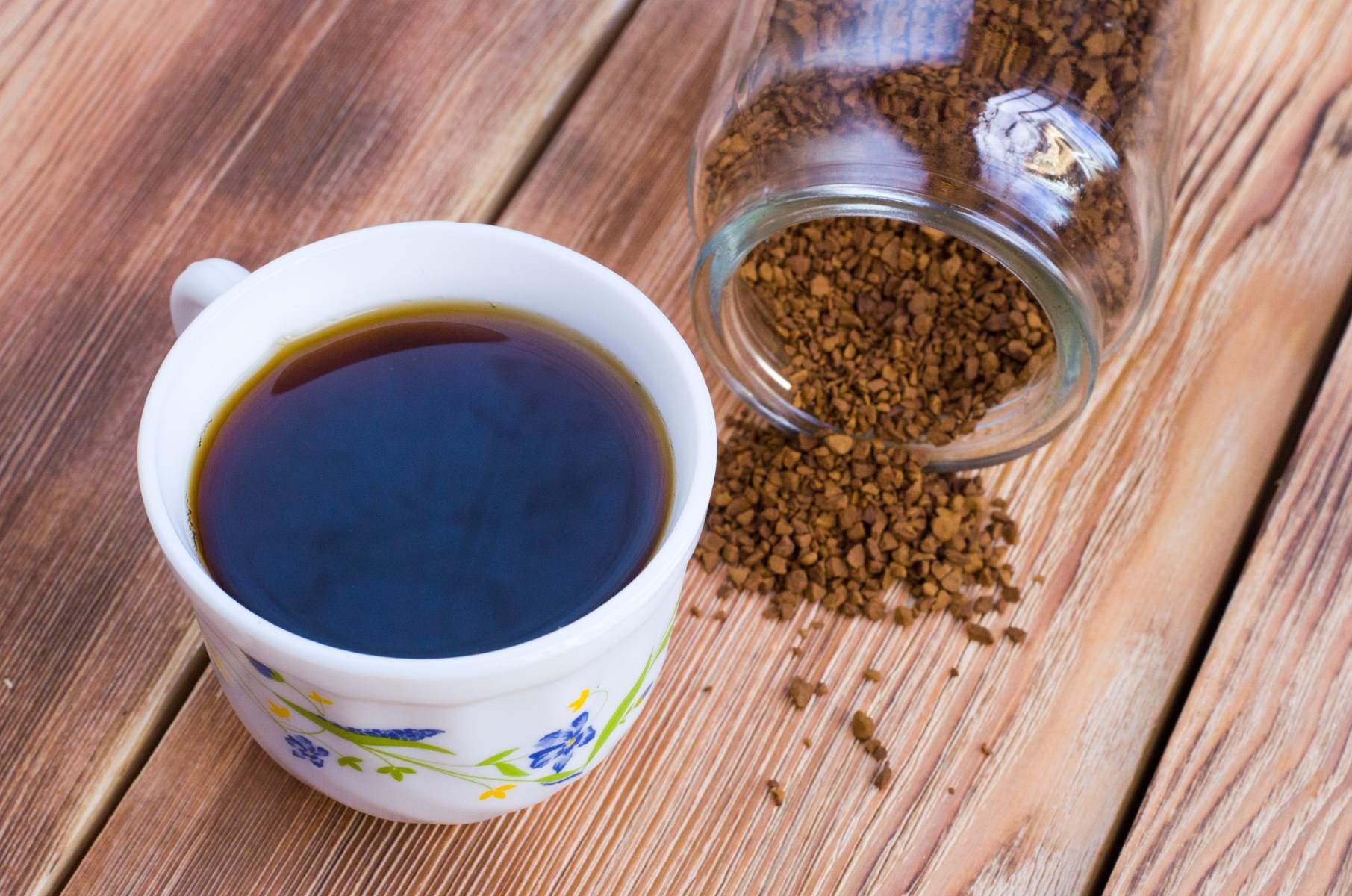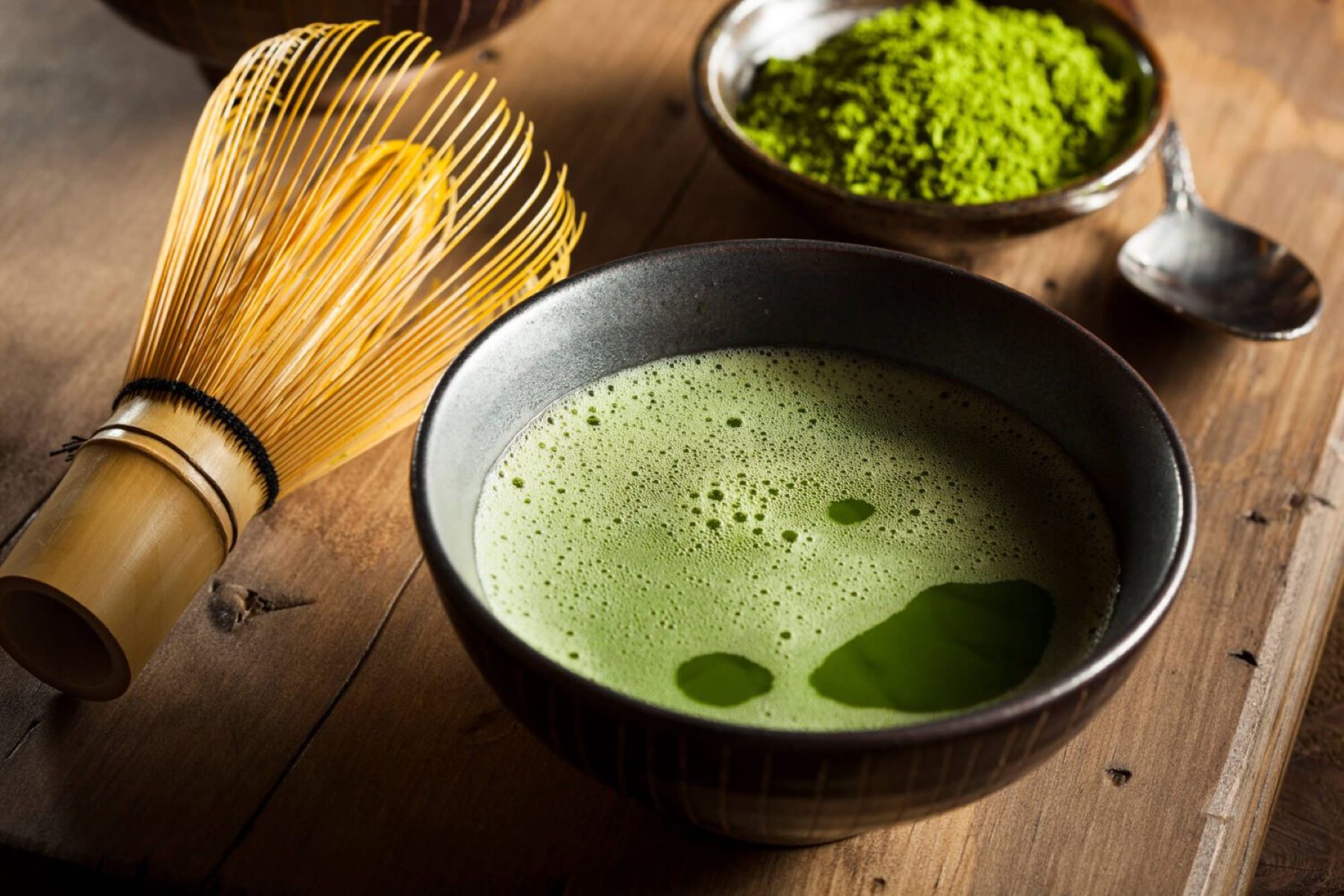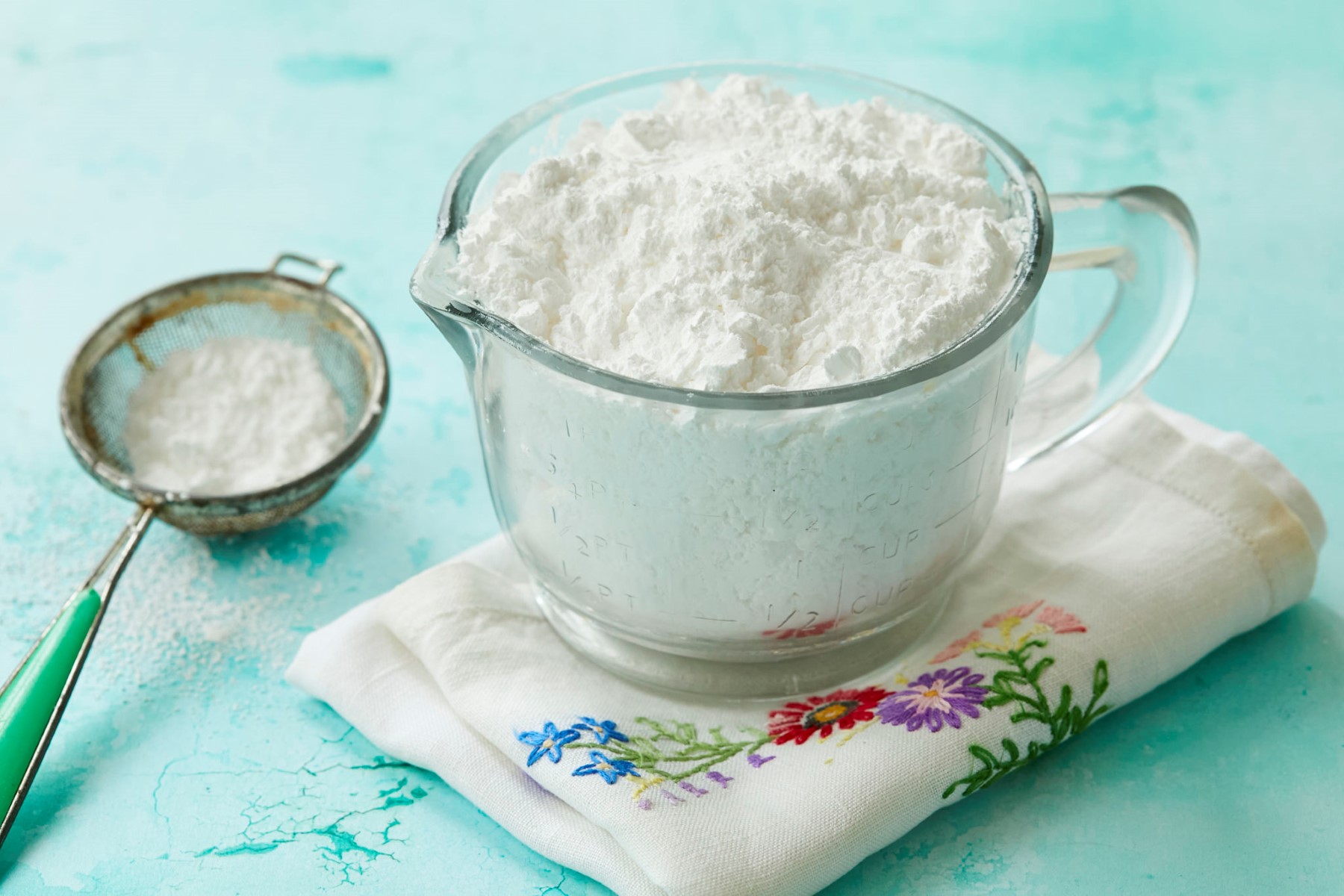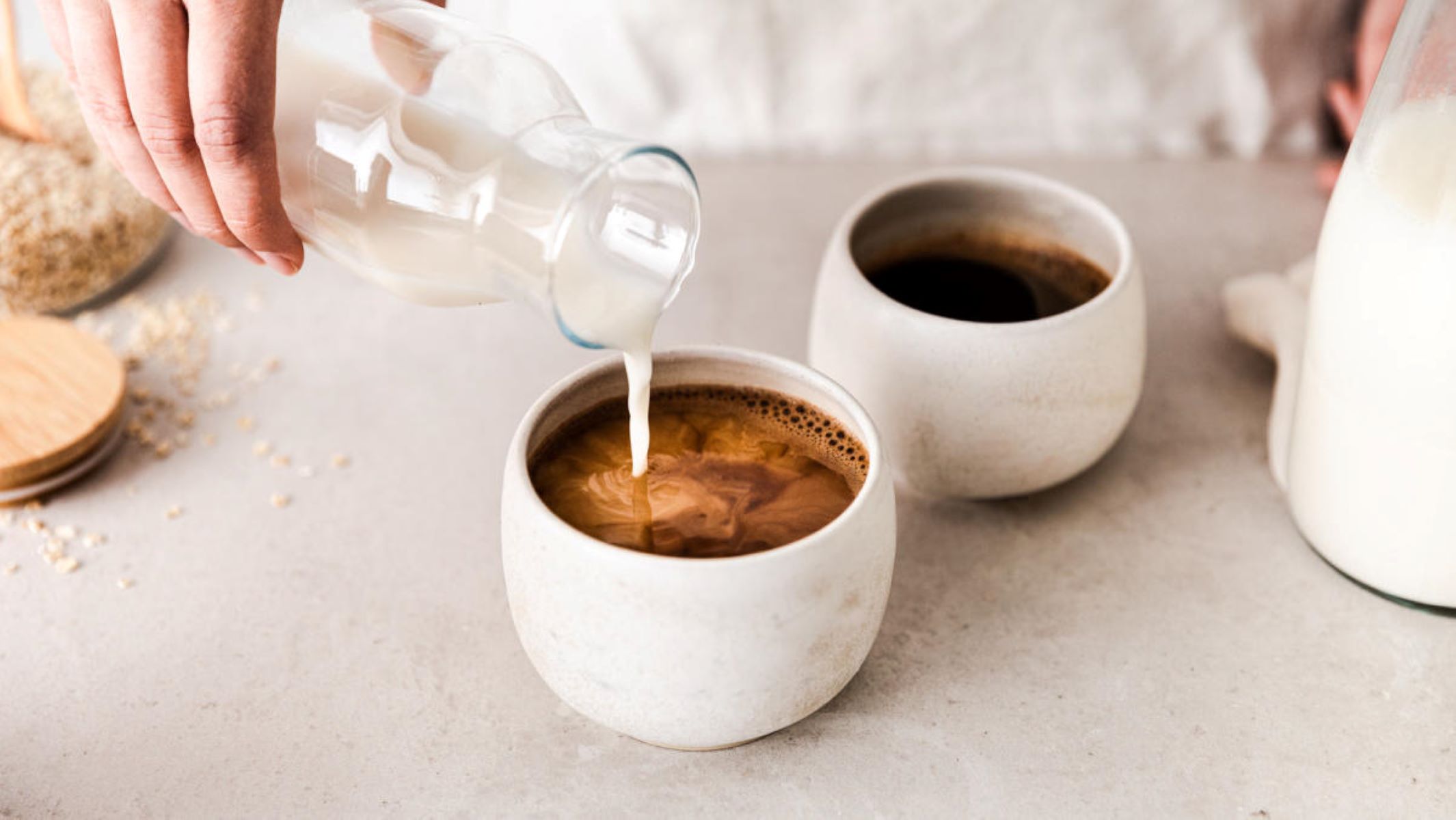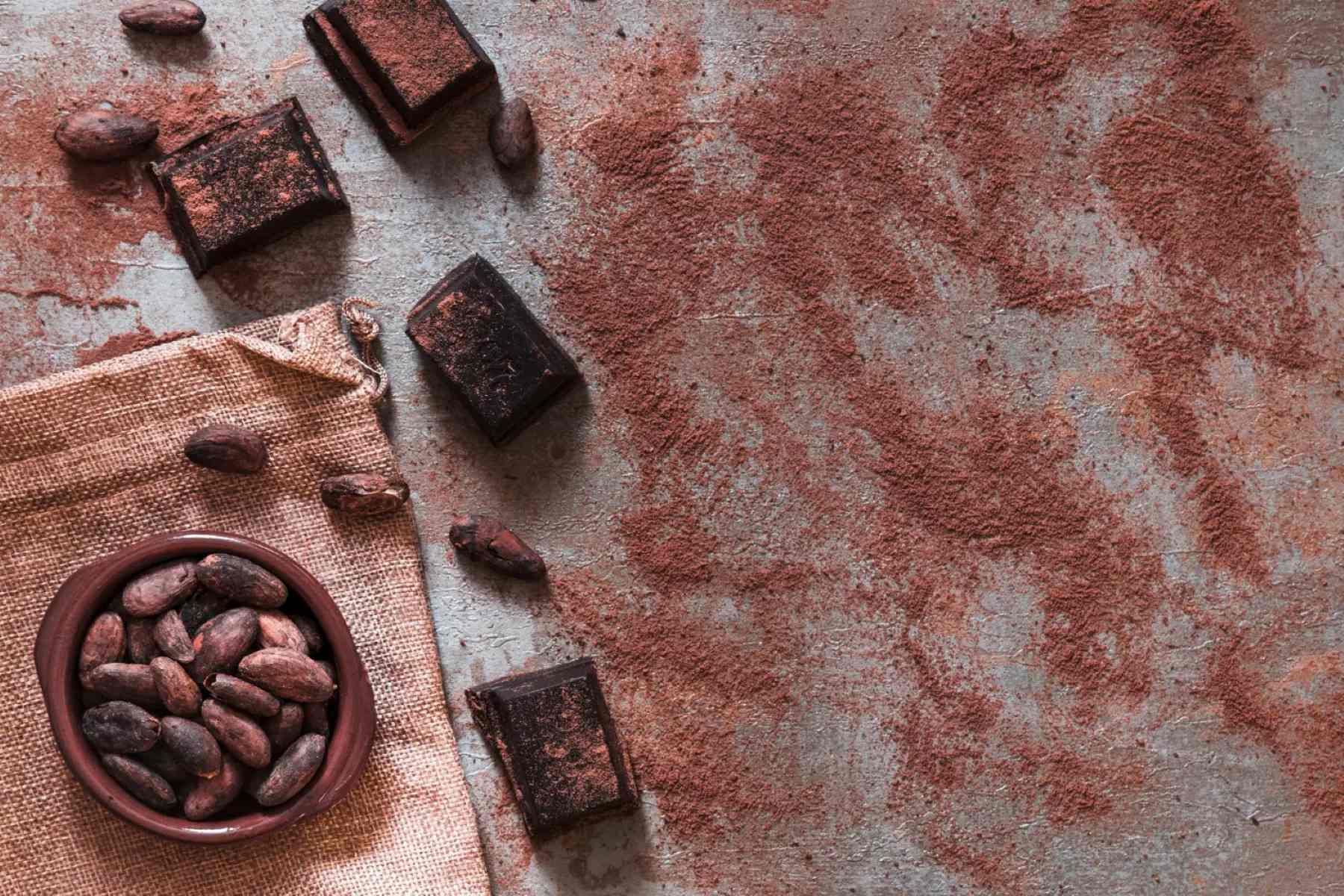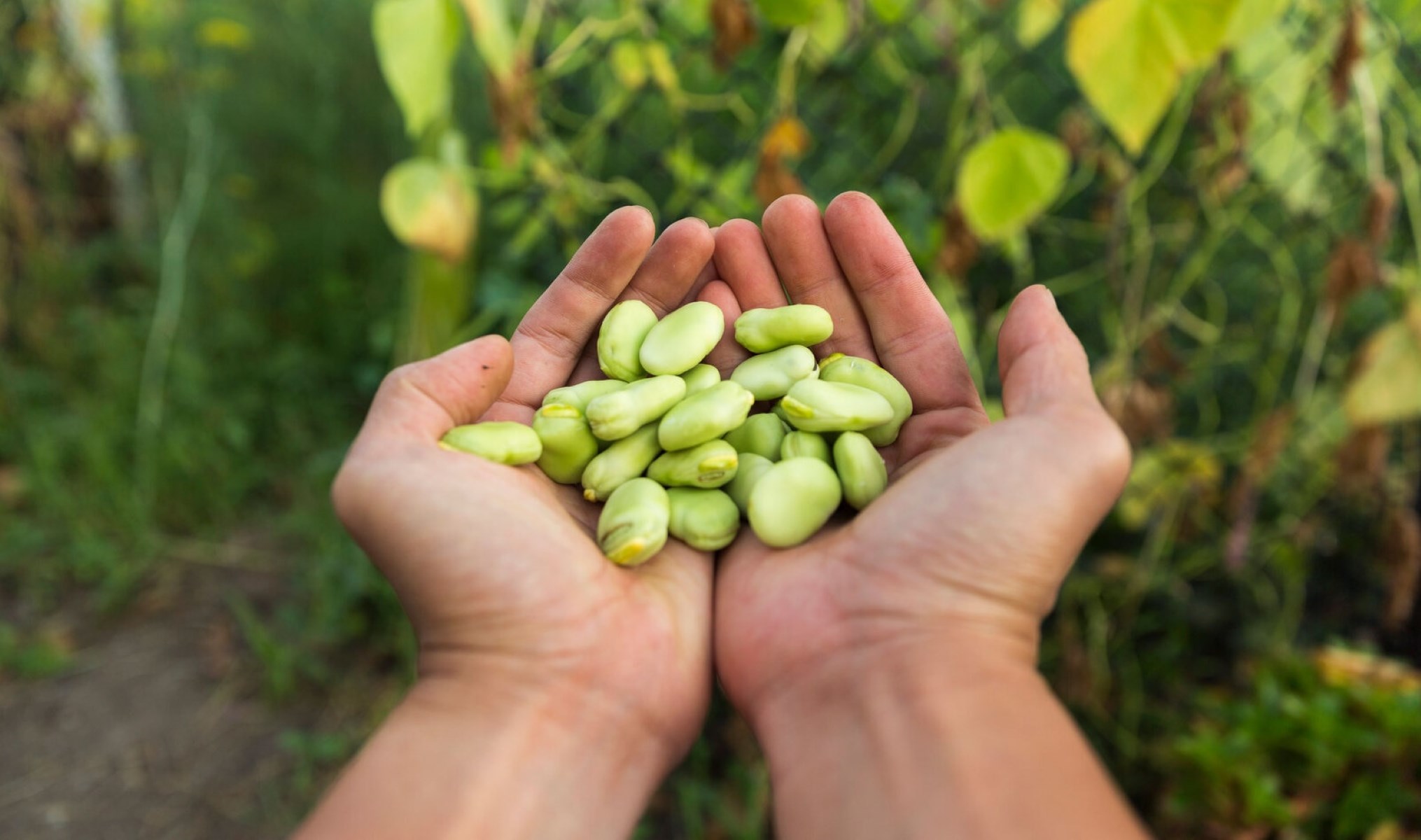Home>Food and Cooking>Starbucks Matcha: The Perfect Alternative For Coffee Haters!


Food and Cooking
Starbucks Matcha: The Perfect Alternative For Coffee Haters!
Published: February 1, 2024
Discover the perfect coffee alternative for non-coffee lovers with Starbucks Matcha. Explore the world of food and cooking with this delightful option.
(Many of the links in this article redirect to a specific reviewed product. Your purchase of these products through affiliate links helps to generate commission for Regretless.com, at no extra cost. Learn more)
Table of Contents
Introduction
Matcha, the vibrant green powdered tea, has been gaining popularity as a beloved beverage choice, especially among those who are not fond of coffee. This finely ground green tea has become a staple in the Western world, offering a refreshing and invigorating alternative to traditional coffee drinks. With its rich cultural heritage, numerous health benefits, and a growing presence in popular coffee chains like Starbucks, matcha has carved out a special place in the hearts of beverage enthusiasts.
The allure of matcha lies in its unique flavor profile, which is characterized by a harmonious blend of grassy notes and a hint of natural sweetness. Unlike coffee, matcha provides a smooth and mellow taste that appeals to those who prefer a more subtle and earthy beverage experience. As the interest in wellness and mindful consumption continues to flourish, matcha has emerged as a symbol of holistic living, offering a delightful way to indulge in a moment of tranquility amidst the hustle and bustle of modern life.
In this article, we will delve into the world of matcha, exploring its origins, the surge of its popularity in Western culture, the myriad health benefits it offers, and its prominent presence on the Starbucks menu. Additionally, we will uncover why matcha serves as the perfect alternative for individuals who are not keen on coffee, and we will even provide insights on how to prepare this delightful beverage at home. So, grab your favorite mug and join us on a journey through the enchanting realm of matcha!
What is Matcha?
Matcha, a revered component of Japanese tea ceremonies for centuries, is a finely ground powder made from specially grown and processed green tea leaves. The cultivation of matcha involves shading the tea plants for several weeks before harvest, which enhances the chlorophyll content and gives the leaves their vibrant green hue. Once harvested, the leaves are steamed to halt fermentation, dried, and then ground into a fine powder using traditional stone mills.
The meticulous process of producing matcha results in a product that is distinct from other green teas. Unlike conventional tea, where the leaves are steeped and discarded, matcha is consumed in its entirety, allowing for the full absorption of its nutrients. This unique preparation method gives matcha its concentrated flavor profile and potent health benefits.
The flavor of matcha is characterized by a delicate balance of umami, natural sweetness, and a hint of bitterness, which sets it apart from other teas. When prepared, matcha yields a smooth, velvety texture with a rich, full-bodied taste that lingers on the palate. This distinctive flavor profile, coupled with its vibrant green color, makes matcha a visually appealing and sensorially gratifying beverage.
In Japanese culture, matcha holds a revered status, symbolizing harmony, respect, purity, and tranquility. It is often used in traditional tea ceremonies, where the preparation and consumption of matcha are considered an art form, steeped in centuries-old rituals and customs. The meditative act of whisking the powdered tea with hot water to create a frothy, emerald-hued concoction is a testament to the deep-rooted significance of matcha in Japanese heritage.
Beyond its cultural significance, matcha has transcended its traditional boundaries and garnered widespread acclaim in the global culinary and wellness spheres. Its versatility extends beyond being a standalone beverage, as it is also incorporated into various culinary creations, including desserts, smoothies, and savory dishes, adding a touch of sophistication and a burst of vibrant color to the culinary landscape.
In essence, matcha represents a harmonious fusion of tradition, flavor, and wellness, offering a multifaceted sensory experience that captivates the senses and nourishes the body and soul.
The Rise of Matcha in Western Culture
The ascent of matcha in Western culture can be described as a captivating journey marked by a convergence of culinary innovation, wellness consciousness, and a quest for unique flavor experiences. Initially revered as a well-kept secret among tea aficionados and health enthusiasts, matcha has transcended its traditional boundaries and made a resounding impact on the Western beverage landscape.
The allure of matcha began to permeate Western culture as a result of its remarkable adaptability, appealing to a diverse array of palates and lifestyles. Its introduction into mainstream coffee shops and cafes served as a catalyst for its widespread acceptance, allowing individuals to savor its distinctive flavor and reap its health benefits in a familiar and accessible setting.
One pivotal factor contributing to the rise of matcha in Western culture is its alignment with the burgeoning wellness movement. As consumers increasingly gravitate towards mindful consumption and holistic well-being, matcha emerged as a symbol of vitality and balance, offering a natural source of energy and a wealth of antioxidants. This inherent association with wellness positioned matcha as more than just a beverage; it became a lifestyle choice, embodying a holistic approach to nourishment and rejuvenation.
Moreover, the culinary versatility of matcha played a pivotal role in its assimilation into Western culture. Its vibrant green hue and distinctive flavor profile inspired chefs and home cooks to experiment with incorporating matcha into a myriad of recipes, ranging from luscious desserts to savory dishes. This culinary exploration not only expanded the realm of matcha's influence but also showcased its adaptability and capacity to elevate a wide spectrum of culinary creations.
The rise of social media and digital platforms also contributed to the propagation of matcha's popularity in Western culture. Captivating visuals of frothy matcha lattes, decadent matcha-infused treats, and aesthetically pleasing ceremonial preparations permeated social feeds, captivating the attention of individuals seeking novel and visually appealing gastronomic experiences.
Overall, the ascent of matcha in Western culture can be attributed to its ability to seamlessly integrate into diverse lifestyles, its alignment with wellness trends, its culinary adaptability, and its captivating visual appeal in the digital age. As matcha continues to enchant palates and hearts across the Western world, its journey from traditional ceremonial tea to a beloved contemporary beverage stands as a testament to its enduring allure and universal appeal.
Health Benefits of Matcha
Matcha, revered for its exquisite flavor and cultural significance, also boasts an impressive array of health benefits that have contributed to its widespread acclaim as a wellness powerhouse. From its rich antioxidant content to its potential for enhancing mental clarity, matcha offers a holistic approach to well-being, making it a compelling choice for those seeking nourishment for both the body and mind.
One of the most notable health benefits of matcha is its exceptional antioxidant profile. Matcha is packed with catechins, a type of antioxidant that is renowned for its potent disease-fighting properties. In particular, matcha contains a high concentration of epigallocatechin gallate (EGCG), a catechin with powerful anti-inflammatory and anti-carcinogenic effects. The abundance of antioxidants in matcha equips it with the ability to combat oxidative stress, protect cells from damage, and bolster the body's defense against various ailments.
Furthermore, matcha is celebrated for its potential to promote relaxation and mental clarity. L-theanine, an amino acid abundant in matcha, is known for its calming and mood-enhancing effects. When consumed, L-theanine works in harmony with the natural caffeine present in matcha, resulting in a sustained release of energy without the jittery side effects often associated with coffee. This unique synergy fosters a state of alert tranquility, promoting heightened focus and cognitive function, making matcha an ideal choice for individuals seeking a balanced and sustained energy boost.
In addition to its antioxidant and cognitive benefits, matcha is also recognized for its potential to support metabolic health. Studies have suggested that the catechins in matcha may aid in boosting metabolism and promoting fat oxidation. This metabolic support, coupled with matcha's minimal calorie content, positions it as a favorable option for individuals seeking to maintain a healthy weight and promote overall metabolic wellness.
Moreover, matcha is a rich source of chlorophyll, the pigment responsible for its vibrant green color. Chlorophyll is known for its detoxifying properties, aiding in the elimination of toxins and heavy metals from the body. This cleansing effect can contribute to overall vitality and well-being, making matcha a valuable addition to a balanced and health-conscious lifestyle.
In essence, the health benefits of matcha extend far beyond its delightful flavor and cultural significance. Its potent antioxidant content, cognitive support, metabolic benefits, and detoxifying properties make it a compelling choice for individuals seeking a nourishing and holistic approach to wellness. With each sip of this emerald elixir, one can savor not only its exquisite taste but also the bountiful offerings it bestows upon the body and mind.
Starbucks Matcha Menu
Starbucks, a prominent purveyor of specialty coffee and tea beverages, has embraced the matcha trend, offering a diverse and enticing array of matcha-infused delights on its menu. From classic matcha lattes to innovative seasonal concoctions, Starbucks has artfully integrated matcha into its beverage repertoire, catering to the preferences of both matcha enthusiasts and curious newcomers alike.
At the heart of Starbucks' matcha offerings is the beloved Matcha Green Tea Latte. This signature beverage artfully combines finely ground, high-quality matcha powder with velvety steamed milk, resulting in a harmonious fusion of earthy, grassy notes and creamy indulgence. The Matcha Green Tea Latte can be enjoyed hot or iced, allowing for a delightful matcha experience that suits any weather or preference.
For those seeking a refreshing twist, Starbucks presents the Iced Matcha Green Tea Latte, a cool and invigorating rendition of the classic beverage. This chilled delight features the same meticulously prepared matcha blend, paired with ice-cold milk, delivering a refreshing and rejuvenating sip that is perfect for warm days or as a revitalizing pick-me-up.
In addition to the traditional latte offerings, Starbucks introduces seasonal and limited-time creations that showcase the versatility of matcha. From the tantalizing Matcha Lemonade, which combines the vibrant flavors of matcha with the zesty brightness of lemonade, to the decadent Matcha Frappuccino, a delightful blend of matcha, milk, and ice, Starbucks continually surprises and delights its patrons with innovative and tantalizing matcha-infused concoctions.
Moreover, Starbucks has extended its matcha repertoire to include delectable culinary treats, such as the Matcha Green Tea Crème Frappuccino and the Matcha Green Tea Cream, which offer a delightful fusion of matcha-infused goodness in the form of delectable desserts. These delectable offerings further demonstrate Starbucks' commitment to integrating matcha into a diverse range of culinary experiences, allowing patrons to indulge in the enchanting flavors of matcha beyond traditional beverages.
Overall, Starbucks' matcha menu stands as a testament to the enduring appeal of matcha in contemporary beverage culture. With its meticulous preparation, innovative adaptations, and commitment to quality, Starbucks has successfully curated a captivating selection of matcha-infused beverages and culinary delights, inviting patrons to embark on a delightful journey through the enchanting world of matcha at their local Starbucks store.
Why Matcha is a Perfect Alternative for Coffee Haters
For individuals who aren't enamored with the bold and robust flavors of coffee, matcha presents an enticing and compelling alternative that transcends the limitations of traditional caffeinated beverages. Embracing matcha as a substitute for coffee offers a myriad of reasons to celebrate its unique attributes and appeal, catering to the preferences and sensibilities of those who seek a harmonious and invigorating beverage experience.
One of the primary reasons matcha stands as an ideal alternative for coffee haters lies in its flavor profile. Unlike the intense and often bitter notes associated with coffee, matcha offers a delicate and balanced fusion of umami, subtle sweetness, and a hint of natural astringency. This nuanced flavor composition creates a sensorial journey that is both gratifying and gentle on the palate, making it an appealing choice for individuals who prefer a more subdued and harmonious beverage experience.
Furthermore, the smooth and velvety texture of matcha, achieved through its meticulous preparation and finely ground nature, provides a luxurious mouthfeel that is distinct from the bold acidity of coffee. This textural indulgence elevates the act of savoring matcha, offering a tactile and sensory delight that enhances the overall drinking experience, appealing to those who seek a beverage that is as pleasing to the touch as it is to the taste buds.
In addition to its flavor and texture, matcha's unique caffeine composition contributes to its allure as an alternative for coffee haters. Unlike the rapid spike and subsequent crash often associated with coffee consumption, matcha provides a sustained and gentle release of energy, courtesy of its combination of natural caffeine and L-theanine. This harmonious interplay of compounds results in a state of alert tranquility, fostering heightened focus and mental clarity without the jittery side effects commonly experienced with coffee, making matcha an ideal choice for individuals seeking a balanced and sustained energy boost.
Moreover, the rich cultural heritage and meditative rituals associated with matcha offer a compelling narrative that transcends mere consumption. Embracing matcha entails embracing a centuries-old tradition that embodies harmony, respect, and tranquility, inviting individuals to partake in a mindful and serene beverage experience that goes beyond mere refreshment.
In essence, matcha's nuanced flavor profile, luxurious texture, sustained energy release, and rich cultural significance position it as an ideal alternative for coffee haters, offering a gratifying and holistic beverage experience that resonates with the mind, body, and soul. Whether enjoyed in a serene moment of contemplation or as a revitalizing pick-me-up, matcha stands as a testament to the captivating allure of a beverage that transcends mere taste, offering a journey of sensorial delight and serene indulgence for those seeking an alternative to traditional coffee.
How to Make Matcha at Home
Making matcha at home is a delightful and rewarding experience that allows you to savor the exquisite flavors and tranquil rituals of this revered beverage in the comfort of your own space. With a few simple tools and mindful preparation, you can embark on a journey of crafting a perfect cup of matcha that embodies harmony, respect, and tranquility.
To begin, gather the essential components: high-quality matcha powder, a bamboo whisk (chasen), a ceramic or glass bowl (chawan), a bamboo scoop (chashaku), and fresh, filtered water heated to approximately 175°F (80°C). It is crucial to use high-quality matcha powder to ensure a vibrant color, rich flavor, and optimal health benefits.
Start by sifting 1-2 teaspoons of matcha powder into the chawan to ensure a smooth and lump-free consistency. This step is essential for achieving a velvety and frothy matcha.
Next, add a small amount of hot water to the matcha powder in the chawan. Use the bamboo whisk to gently incorporate the water into the matcha, creating a smooth paste. This initial blending process sets the stage for achieving a lusciously creamy and well-integrated matcha base.
Once the matcha and water form a smooth paste, gradually add the remaining hot water to the chawan. Using the bamboo whisk, briskly whisk the matcha in a rapid back-and-forth motion, ensuring that the powder is fully suspended and a frothy layer forms on the surface. This whisking technique, known as a "W" or "M" motion, is instrumental in achieving the desired frothy consistency and ensuring a harmonious amalgamation of the matcha and water.
As you whisk the matcha, embrace the meditative rhythm and graceful motions, allowing the serene act of preparation to become a mindful and contemplative experience. The frothy, emerald-hued elixir that emerges from the whisking process embodies the essence of matcha, capturing its vibrant flavors and cultural significance in a single captivating cup.
Once the matcha has been meticulously whisked, savor the tranquil beauty of the prepared beverage, reveling in its vibrant color, inviting aroma, and enchanting froth. Embrace the opportunity to engage all your senses as you partake in this moment of mindful indulgence.
In essence, making matcha at home is more than a mere preparation; it is a ceremonial journey that invites you to immerse yourself in the rich heritage and sensory delights of this revered beverage. With each sip, you not only savor the exquisite flavors of matcha but also partake in a timeless tradition that embodies harmony, respect, and tranquility, enriching both the body and the spirit.
Conclusion
In conclusion, the enchanting world of matcha transcends mere beverage consumption, offering a sensorial journey that embodies tradition, flavor, and holistic well-being. The rise of matcha in Western culture has been marked by a convergence of culinary innovation, wellness consciousness, and a quest for unique flavor experiences. From its rich cultural heritage to its myriad health benefits, matcha has captivated the hearts and palates of individuals seeking a harmonious and invigorating alternative to traditional caffeinated beverages.
The allure of matcha lies not only in its delicate flavor profile and vibrant green hue but also in its potential to foster a state of alert tranquility, promoting heightened focus and mental clarity without the jittery side effects often associated with coffee. As a staple on the Starbucks menu, matcha has been artfully integrated into a diverse array of beverages and culinary creations, inviting patrons to embark on a delightful journey through the enchanting world of matcha.
Moreover, the health benefits of matcha, ranging from its potent antioxidant content to its potential to support metabolic health and promote relaxation, position it as a compelling choice for individuals seeking a nourishing and holistic approach to wellness. With each sip of this emerald elixir, one can savor not only its exquisite taste but also the bountiful offerings it bestows upon the body and mind.
For those who are not fond of coffee, matcha stands as an ideal alternative, offering a gratifying and holistic beverage experience that resonates with the mind, body, and soul. Its nuanced flavor profile, luxurious texture, sustained energy release, and rich cultural significance make it a captivating choice that transcends mere taste, offering a journey of sensorial delight and serene indulgence.
In essence, matcha represents a harmonious fusion of tradition, flavor, and wellness, inviting individuals to partake in a mindful and serene beverage experience that goes beyond mere refreshment. Whether enjoyed in a serene moment of contemplation or as a revitalizing pick-me-up, matcha stands as a testament to the captivating allure of a beverage that embodies harmony, respect, and tranquility, enriching both the body and the spirit.
